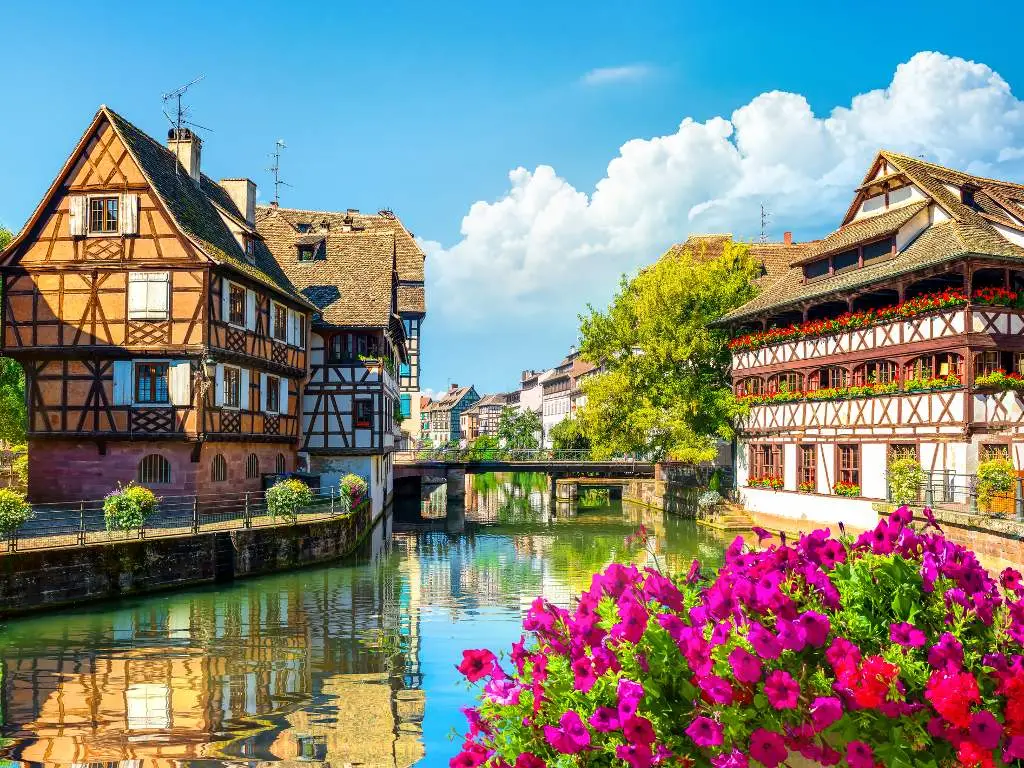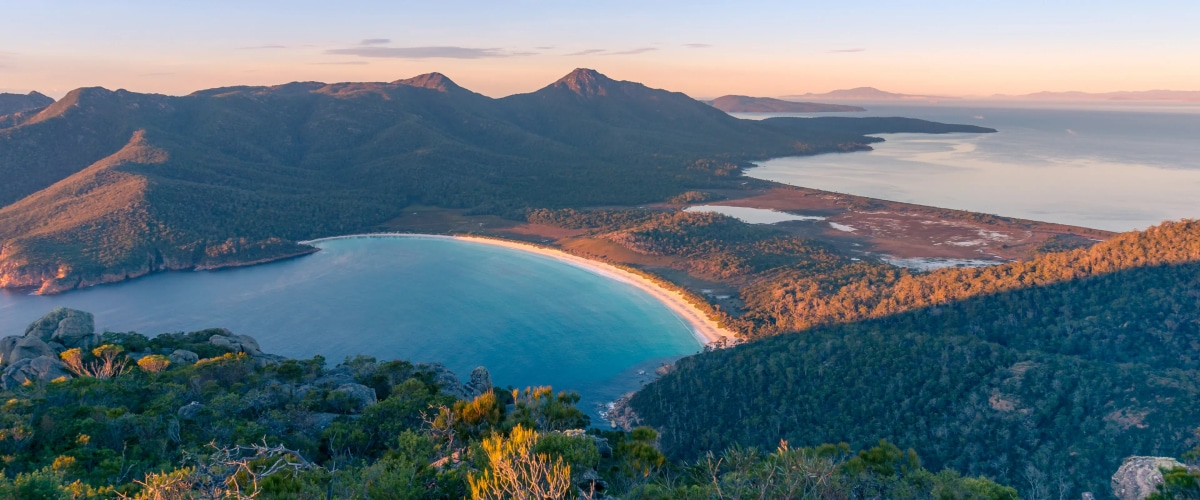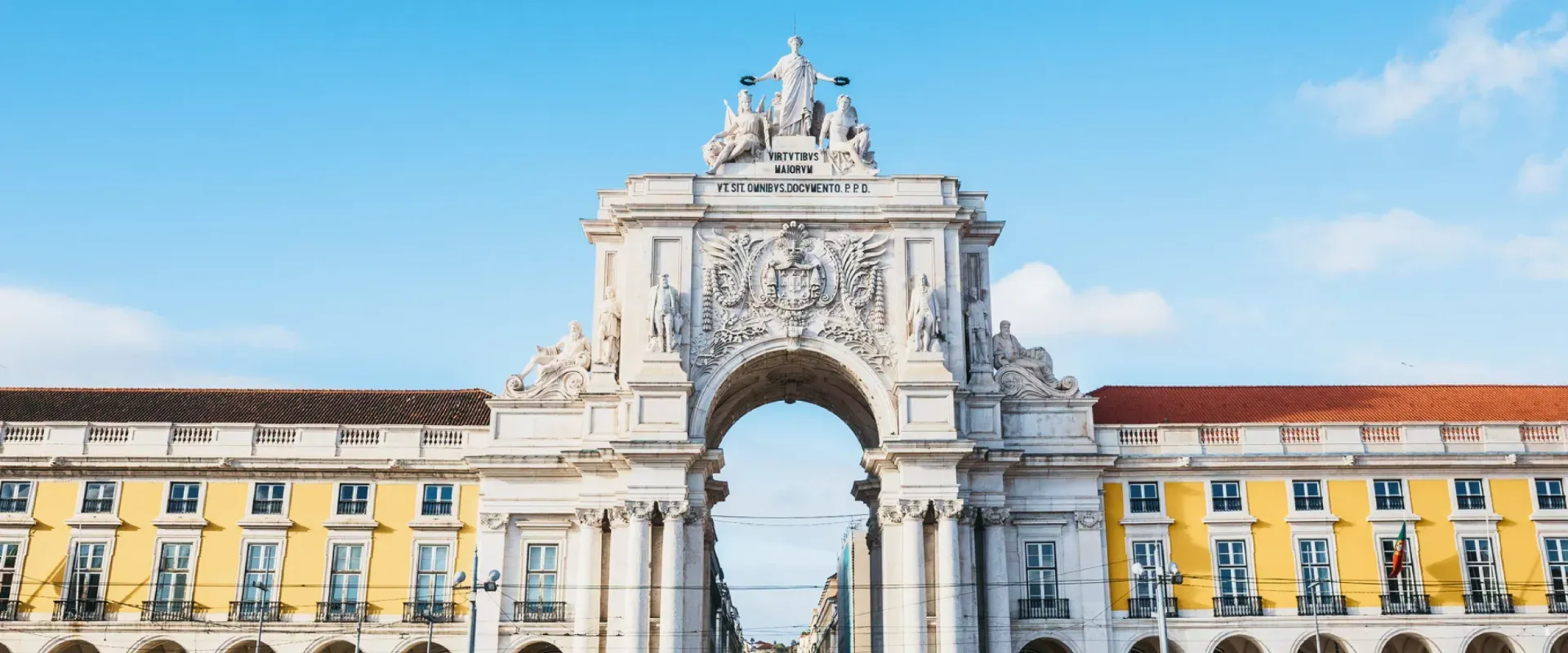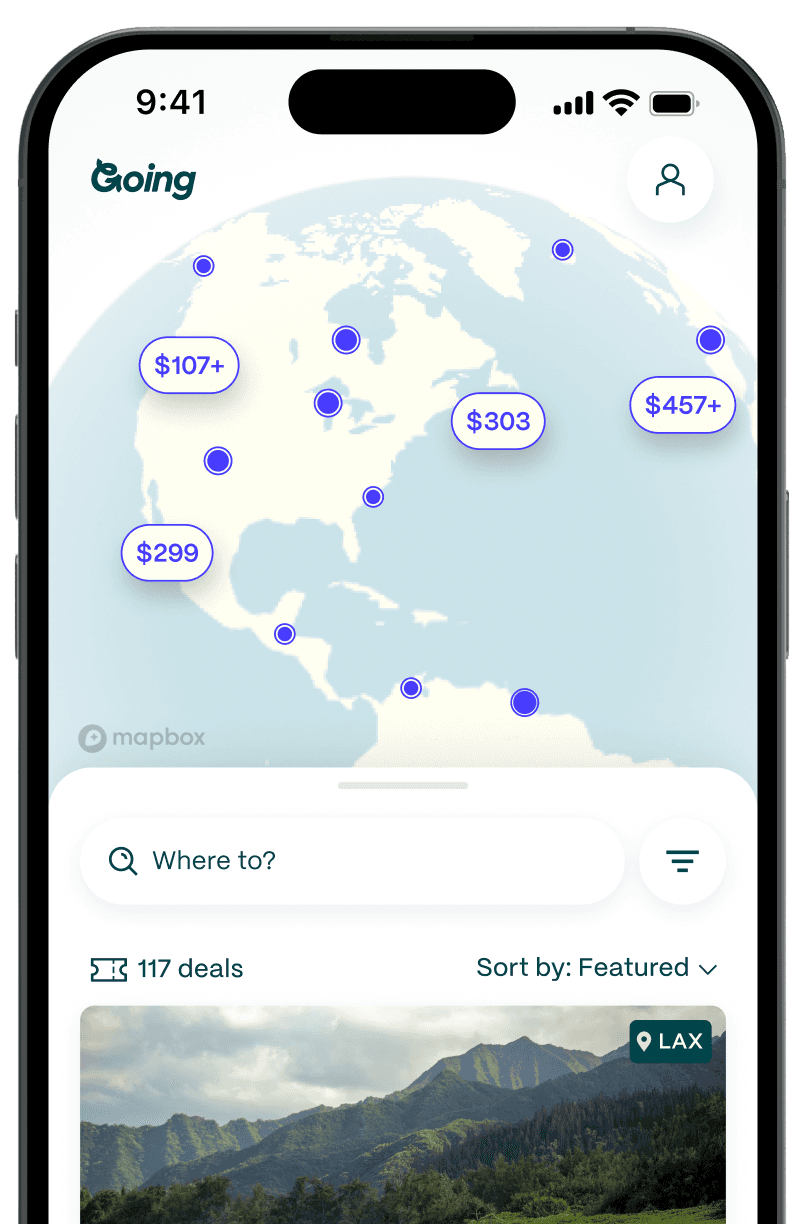
12 Day Trips From Mexico City
Table of Contents
Mexico City has many charms, from being a surreal living museum to being home to arguably the best tacos on the planet. The only thing that could possibly add to its charm: all the unique day trips that lie just outside the city itself. You can observe a massive monarch butterfly migration, climb a 17,000 foot volcano, sit in mountainside hot springs, or visit ancient pyramids—all within or near the Valley of Mexico.
In Mexico, it’s easy to explore via bus, car, or even rideshare (like Uber) in some cases. Most day-trip destinations will be busy on weekends and Mexican holidays, so plan accordingly.

El Ajusco: 30 minutes by car

On the southern edge of Mexico City, El Ajusco is the closest mountain to the city and rises almost 12,900 feet. The best time to hike to the top is in the early mornings. Get someone who knows the way to take you, and summit by sunrise. (The morning wake-up call won’t be as bad if you stay the night on the mountain near the trailhead; Refugio en el Ajusco is an excellent option for accommodations.) Round-trip, the hike is about 3.5 miles give or take and takes about 5 hours to complete, depending on your hiking experience level. It’s not exactly a walk in the park; there are spots where there’s a 40-degree incline on winding mountain paths through coniferous forest.
You’ll be hungry after your descent, but being that it’s Mexico, there’s food everywhere along the main highway in the form of restaurants and informal roadside tents. Traditionally, mountain food of fire-grilled meats and veggies are meant to be washed down with a Bohemia beer.
How to get from Mexico City to El Ajusco
You can get from Mexico City to El Ajusco in about 30 minutes by Uber.
Teotihuacán: 45–60 minutes by car, bus, or metro

This impressive archeological site is a bit of an enigma: Most historians agree that it was built by either the Teotihuacanos or the Toltecs, but there is little in the way of certainty. Regardless, the UNESCO site is made up of several pyramids, temples, and other structures. Dating back nearly 2,000 years, Teotihuacán was both a ceremonial site and an important trade location whose influence spanned from the northern deserts to the southernmost reaches of the Mayan and Zapotec territories. By the time the Spanish invaded, the Aztecs (or Mexica, as they called themselves) had commandeered Teotihuacán, and it then became one of the largest trading centers in Mesoamerica.
The Pyramid of the Sun, the largest of the complex’s three main pyramids, is the third-largest pyramid in the world. Another of the main temples—Quetzacoatl—is where you’ll see impressive remnants of the ornate, original stylings in dedication to the plumed serpent god. In the town of San Martín de las Piramides where the pyramids of Teotihuacán sit, you can also participate in a temazcal ceremony—an Indigenous sweat lodge valued for its ability to clear the mind and body; Temazcal Mazatl offers an authentic experience. Another favorite among visitors: eating at La Gruta, a cave restaurant where you can sample margaritas and a variety of local foods, such as escamoles (marinated ant eggs) and squash soup.
How to get from Mexico City to Teotihuacán
Teotihuacán is located about 45 minutes to an hour from Mexico City; you can reach the pyramids by taxi or rideshare, bus from Terminal Norte, or metro from the Indios Verdes station. There is an entrance fee of 85 pesos (about $4.50).
Tepoztlán: 90 minutes by bus or rideshare

Another mountaintop pyramid close to Mexico City is Tepoztlán—a bohemian hideaway that has grown more popular with digital nomads since the pandemic began. In addition to the pyramid, this town also has hiking, waterfalls (in the rainy summer season), food, drink, shopping, festivals, spiritual ceremonies like temazcales (sweat lodges), and more.
The mountain vistas from within the town are stellar, and there are several nice spas in town (such as La Buena Vibra, which also has a hotel if you choose to extend your stay beyond a day). Make time to hike to El Tepozteco pyramid and the Pools of Quetzacoatl, which fill with rainwater during the summer. Sample the itacates—a local-favorite street food of triangular corn masa topped with meat, salsa, cheese, and veggies.
How to get from Mexico City to Tepoztlán
It takes 90 minutes to get from Mexico to Tepoztlán either by bus (from the Tasqueña station) or by rideshare. There is an entrance fee to the pyramid of 55 pesos (about $3)
Paso de Cortés: 90 minutes by car

Part of Iztaccíhuatl and Popocatepetl National Park, Paso de Cortés is the mountain pass between the two storied volcanoes, dormant Iztaccíhuatl and active Popocatepetl. The pass is a high alpine region with pine trees and views of the surrounding mountains, where quesadillas are prepared over open fires and cozy cabins with fireplaces invite guests weary from hiking. The area is popular for backpacking and camping, and the elevation is high (12,112 feet). This is the perfect place to imagine what the Valley of Mexico would have been like many years ago, before the Spanish invasion in 1519.
While in the area, you can visit Apatlaco Ecological Park for a waterfall hike or dine on Mexican delicacies like carne asada and grilled trout at mountainside El Monte Popocatepetl. If you’re not sure where to explore, staff are always eager to give recommendations, so stop into a cabin or restaurant if curiosity strikes.
How to get from Mexico City to Paso de Cortés
You can get from Mexico City to Paso de Cortés in about 90 minutes. It’s best to rent a car or hire a taxi for this trip, as there will be plenty of opportunities to pull over and sample food stops as you head up the mountain; driving will also give you the freedom to take different day hikes throughout the area.
Nevado de Toluca: 90 minutes by car or rideshare

At 15,390 feet, Nevado de Toluca is the fourth-tallest mountain in Mexico, and it looms over two high-altitude lakes, as well as Valle de Bravo (another stellar day-trip destination from Mexico City). The mountain does not require a technical climb, so hikers of different experience levels can enjoy it; the main hike goes around the rim of the extinct volcano, and you can choose how far you wish to go. The peak of El Fraile, about halfway across the crater, offers panoramic views of the valley. One of the many volcanoes in this region, Nevado de Toluca is long extinct and a popular day trip for chilangos (Mexico City residents).
How to get from Mexico City to Nevado de Toluca
At 90 minutes from Mexico City, Nevado de Toluca is most easily reached with a car, which you can rent in the city, or a rideshare option, like Uber. Ubers between the city and the mountain run around $90 one way. Don’t forget to bring lunch with you, as you’ll need fuel for the hike and the few vendors on the mountain occasionally run out of food (or might not offer something you’re interested in).
Puebla: 2 hours by bus

Built upon centuries of Indigenous history, Puebla is the charming colonial capital of the greater Puebla state. With just a fraction of the residents of nearby Mexico City, it’s accessible yet cosmopolitan and a microcosm of some of the best that Mexico has to offer. As the country’s fourth largest city, it’s known for its history, food (looking at you, chile en nogada), and churches (there are 365 in the city). It also earned UNESCO World Heritage status for its wealth of Baroque art and architecture. While visiting Puebla, make time for the Pyramid of Cholula, and if you have extra time, take a side trip to the village of Atlixco.
How to get from Mexico City to Puebla
At two hours from Mexico City, Puebla is most easily accessible if you let someone else do the driving. Take the ADO bus from the TAPO bus station; buses leave roughly every 40 minutes, and the ticket costs about $10-12 one way. Once in Puebla, you can easily take taxis and Ubers to get around.
Malinalco: 2 hours by bus, car, or rideshare

A charming town nestled deep within the mountains of Estado de México, Malinalco is easy to reach by direct bus and offers a number of activities to pass the day. There are cute shops downtown featuring locally made textiles and crafts; excellent, charming restaurants such as Los Placeres and Casa Vieja; and a number of bars, like El Diez Terraza Bar (with a terrace that overlooks the town center) and Malin’Maya Pulque & Snacks for sampling small-batch mezcals and pulque (a fermented agave nectar with low alcohol content).
The top reason most people visit Malinalco is to see the 14th-century pyramid that sits on a mountainside overlooking the town. There are 426 steps that wind around the mountain to get there, and the views are incredibly worth it. The spring equinox and Day of the Dead are popular times to engage with pre-Columbian history here, as there are festivals that draw guests from Mexico City and beyond.
How to get from Mexico City to Malinalco
Malinalco is located two hours from Mexico City and can be easily accessed via bus from the Observatorio bus station, by renting a car, or by taking a rideshare. There is an entrance fee to the pyramid of 75 pesos (about $4).
Cuernavaca: 2 hours by bus or car

Chilangos love to visit Cuernavaca, just two hours from the capital, for its perpetually warm, sunny weather (even more so than Mexico City, which is, of course, warm and sunny but experiences bouts of rain, which are far less frequent in Cuernavaca). Locals rent out their houses with swimming pools here, where people from Mexico City go to soak and escape the bustle of the city.
The city center is a colonial gem by architectural standards, loaded with music and performances, low-key restaurants, and bars. Museums, such as the Palace of Cortés (built in Gothic and Mudéjar styles between 1523–1528 and one of the oldest conserved colonial-era buildings in the Americas) and the Museum of Contemporary Indigenous Art, are great places to get a better grasp of Mexico’s long, complex history.
How to get from Mexico City to Cuernavaca
Located two hours from Mexico City, Cuernavaca is accessible by bus from the Tasqueña station. You can also rent a car to visit other destinations near Cuernavaca, including the Xochicalco pyramids (about 40 minutes from downtown) and the watery caves of Cacahuamilpa (90 minutes from downtown).
Huasca: 2.5 hours by bus and taxi

This verdant and cool mountain town is one of many mining towns in Central Mexico, including nearby Mineral del Chico and Mineral del Monte. Steeped in Toltec mysticism, the town is a spiritual haven and also a breath of fresh air when coming from the city, as it is surrounded by pristine pine forests and deep canyons. The Basalt Prisms—stunning hexagonal rock structures set among waterfalls—are a sight to behold. Trout Forest, a park with a lake and zipline, and the Elf Museum, an irreverent dive into fantastical local lore, are great spots to visit with children. Take a hike, such as the Lion View hike, in the surrounding forests, and look for chunks of obsidian on the ground.
How to get from Mexico City to Huasca
Huasca is located about 2.5 hours from Mexico City. Direct buses go to Pachuca (1 hour), and from there, you can take a 30-minute taxi ride up to Huasca. To be able to get around to different trailheads and sites of interest, you’ll want to hire a taxi driver or drive a car. The distances are several miles between points of interest in some cases; a rental car will give you more freedom to explore.
Taxco: 2.5 hours by bus

Known for its winding cobblestone streets and plethora of high-quality silver, Taxco is a striking city in Mexico. Terracotta roofs, white walls, and bougainvillea plants make this colonial city look more like a charming Mediterranean village than a Mexican town. However, you’ll know you’re in Mexico because of the mariachis that hang out in the town square in the evenings and the famous pozolerías (restaurants that sell pozole, a traditional Mexican stew made from hominy with meat); La Tía Félix is great for its low-key, home-cooked vibes. This mining city still produces a great deal of jewelry and other silver goods, and the quality and prices are among the best in Mexico.
How to get from Mexico City to Taxco
Taxco is located 2.5 hours from Mexico. Take a direct bus from Mexico City’s Tasqueña station. Once there, Taxco is easy to navigate by foot or taxi.
Valle de Bravo: 2.5 hours by car

This lakeside village sits high in the mountains of Estado de México. The manmade lake is a reservoir and serves as the protagonist to this spectacular setting, where people come from the city to go water skiing, skydiving, paragliding, and horseback riding. The town itself has infinite charm, with artisans selling handmade clothing, hats, and more from shops and road-side stands. Restaurants and street food vendors are common here, as are Mexican Catholic churches. The bohemian set from Mexico City has recently laid claim to this town, transforming it into a digital nomad hot spot, lacking only a fast internet connection. If you visit in the winter, head to the Piedra Herrada Monarch Butterfly Sanctuary to see the migration of monarchs. It’s an easy place—even luxurious at times—to escape the bustle of the city.
How to get from Mexico City to Valle de Bravo
Valle de Bravo is located 2.5 hours from Mexico City; renting a car is a wise option, as there’s plenty of delicious taco stands and artisans to check out on the road before getting to Valle de Bravo. You can also try a rideshare option, such as BlaBla Car, which can run as little as $5 per person.
Grutas de Tolantongo: 3.5 hours by car

These hot springs are located on the side of a cliff, leading down to an impossibly blue and warm river, with dramatic canyon views. The river, turned a vibrant turquoise by magnesium salts, is mostly murky, but the springs carved into the side of the mountain are clearer and warmer. The drive down the mountain is steep and has hairpin switchbacks, so be careful. Upon arrival, you’ll be rewarded with stunning views in the form of Hidalgo’s vast, rugged mountains.
There are two hotels—La Gruta and Paraíso Escondido—and a clearly marked camping area, which will take care of your accommodations if you choose to stay longer than a day. There is also authentic Mexican food in a laid-back restaurant onsite. It’s cooler in the mountains than it is in the city, so consider visiting when the weather is warmer—in Mexico, that’s generally April through June. Occasionally, you'll run into summer rain during this time, which cools things down a bit but not enough to ruin the experience. In October and November, it's still warm but everything gets a bit more lush. Unfortunately, in the winter months of December through February, the water can be too cool to swim in due to the mountain air.
How to get from Mexico City to Grutas de Tolantongo
Located about 3.5 hours from Mexico City, Grutas de Tolantongo is nearly too far to do in a day, but locals and visitors alike squeeze it into a single 24-hour time frame all the time, so it’s definitely doable. The springs are most easily accessed with a car, as it allows you to get there faster and on a more direct route than if you were to take public transport. Vibe Adventures offers a day tour to Tolantongo and back to Mexico City for $84, which is arguably the easiest and cheapest way to make this a quick trip. While you can make this a day trip, you’ll get to spend more time exploring the areas if you choose to spend the night; rooms can be reserved right next to the hot springs.

See Going's deals on flights to Mexico City, and join today to get cheap flights from all over the world delivered right to your inbox.
Other Mexico City guides
Last updated January 13, 2026









